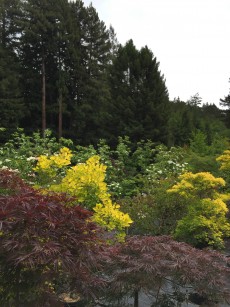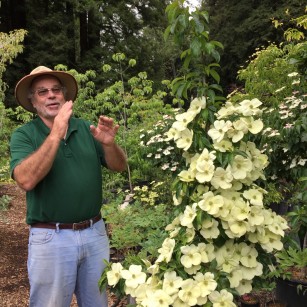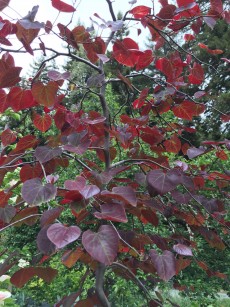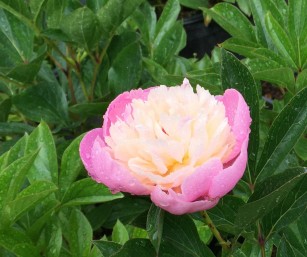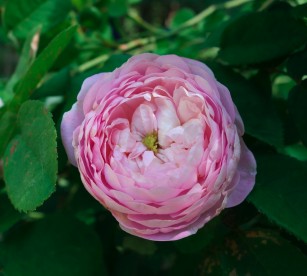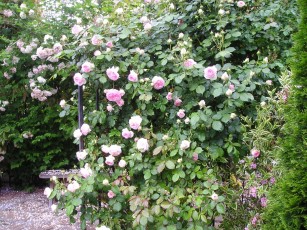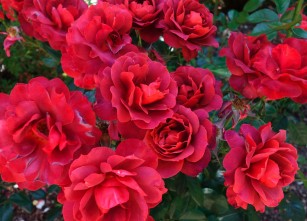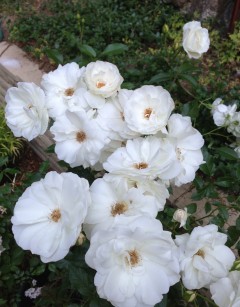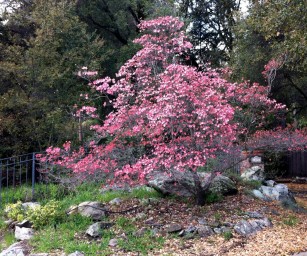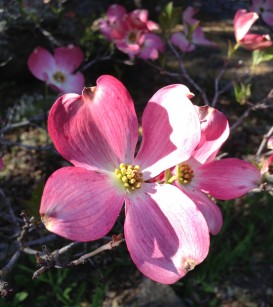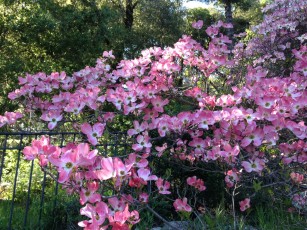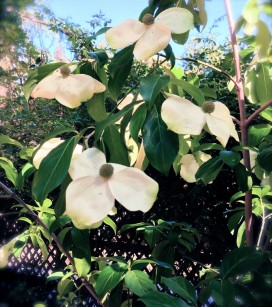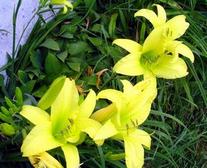Roses are the flower of love. Many of us have fond memories of favorites in our mother?s garden or of a beautiful bouquet given or received on Valentine?s Day. It?s dormant season for roses which is good for both pruning and adding a few to the garden.

As a designer I have clients who have inherited roses and want to keep them as a remembrance. Others want to create a cutting garden filled with roses and other perennials. Don?t feel guilty for growing those beauties in your own garden. They use less resources than you think and there are many ways to grow them sustainably.
Roses, whether bush types, climber or ground cover carpet varieties, use a moderate amount of water in order to thrive according to the latest Water Use Classification of Landscape Species (WUCOLS) list. This amount of summer irrigation is the same as many of the plants on the list of Scotts Valley Water District?s 800 Approved Low Water-Use Plants for lawn replacement. Plants such as Emerald Carpet manzanita, Joyce Coulter ceanothus, Siskiyou Blue fescue grass, Pacific wax myrtle, butterfly bush, yarrow hybrids and Tapien verbena have similar water requirements.
Since now is the time to prune your roses here are a few tips.
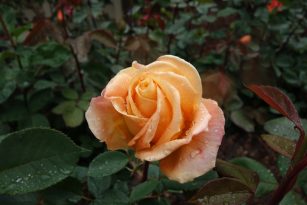
Prune shrubs moderately to keep them compact. The goal is to keep the center of the plant open for good air circulation aiming for a vase-shaped bush with an open center. Cut out canes that cross, appear weak or are diseased, spindly or dead. Healthy canes appear green or reddish while old and dying canes are brown. Cut back the remaining stems by about one third. When pruning, cut canes at a 45-degree angle just above an outward facing leaf bud or a swelling on the cane. Clean pruners after every use to prevent the spread of disease and keep your pruners sharp.
Prune heirlooms roses such as David Austin and other old antique garden roses less because their open look is part of their charm.
Same goes for climbing roses. Cut out extra stems if there are too many and also cut back long established canes to about the place where they are slightly thicker than a pencil. Then cut each side stem down to several inches. This will make the cane flower along its complete length for a beautiful spring display.
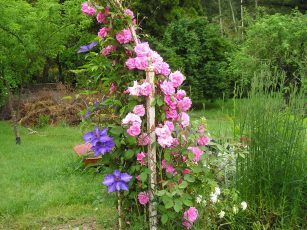
Pluck off and rake away any old leaves. They can spread fungal spores. Consider spraying dormant plants with a combination of organic horticultural oil and copper soap or lime-sulfur. If you usually only have problems with black spot you can use a mixture of 1 teaspoon baking soda with a few drops of light horticultural oil in 1 quart water and spray every 7 to 10 days during the spring.
Prune your roses throughout the growing season, too. Deadheading, or cutting off spent flowers, encourages plants to re-bloom. Mulch around your roses to conserve water and encourage soil microorganisms.
Don’t worry whether you’re pruning job is perfect. Roses are super forgiving and you can always trim them up again later.

